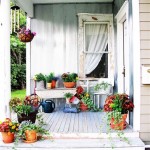How to Decorate Slippers At Home: A Comprehensive Guide
Slippers provide comfort and warmth, particularly within the confines of a home environment. While functional, slippers can also serve as a canvas for creative expression. This article presents a comprehensive guide to decorating slippers at home, covering materials, techniques, and design considerations.
The process of decorating slippers allows for personalization and customization, transforming ordinary footwear into unique and aesthetically pleasing items. The scope of decoration can range from simple embellishments to complex artistic designs, depending on individual preferences and skill levels. Adherence to proper techniques and the use of suitable materials are crucial for achieving durable and visually appealing results.
Selecting the Right Slippers and Materials
The foundation of any successful slipper decoration project lies in selecting the appropriate slippers. The type of slipper, its material composition, and its overall structure will all influence the decorative process and the effectiveness of different embellishment techniques.
Consider the base material of the slipper. Common materials include felt, fleece, cotton, terry cloth, and synthetic fabrics. Felt and fleece offer a soft, textured surface suitable for various embellishments, while cotton and terry cloth can be easily dyed and embroidered. Synthetic materials, such as polyester, may require specialized adhesives or heat-transfer techniques for effective decoration.
Slipper construction also plays a role. Open-toe slippers, for instance, provide less surface area for decoration compared to closed-toe designs. Backless slippers may require more secure embellishment techniques to prevent decorations from shifting or falling off during wear. The sole of the slipper should also be considered; embellishments should not interfere with traction or create discomfort when walking. Avoid decorations that add excessive bulk or create pressure points on the foot.
Once the slippers have been chosen, the next step is to gather the necessary decorating materials. The choice of materials will depend on the desired aesthetic and the chosen decoration technique. Common materials include:
- Fabric Paints: Suitable for adding color and designs to fabric slippers. Opt for paints specifically designed for textiles to ensure durability and washability.
- Embroidery Floss: Ideal for creating intricate stitched designs on felt, fleece, or cotton slippers. A variety of colors and thread types are available to achieve different textures and effects.
- Beads, Sequins, and Rhinestones: Add sparkle and dimension to slippers. Choose beads and sequins with secure holes for sewing or use appropriate fabric glue for attachment.
- Ribbon and Lace: Can be used to create bows, trims, or decorative overlays on slippers. Select ribbon and lace that complement the slipper's material and color.
- Felt Cutouts: Pre-cut shapes or custom-designed felt pieces can be glued or sewn onto slippers to create patterns or motifs.
- Pom-poms and Tassels: Add a playful and whimsical touch to slippers. These can be attached using glue, thread, or wire.
- Fabric Markers: Convenient for drawing freehand designs or adding details to existing embellishments. Use markers designed for fabric to prevent fading or bleeding.
- Adhesives: Fabric glue, hot glue, and fusible webbing are useful for attaching various embellishments. Choose an adhesive appropriate for the materials being used and ensure it provides a strong and durable bond.
In addition to these materials, certain tools are necessary for slipper decoration. These may include:
- Needles and Thread: For sewing beads, sequins, ribbon, or felt cutouts onto slippers.
- Scissors: For cutting fabric, ribbon, and other materials.
- Pencil or Fabric Chalk: For sketching designs onto slippers before decorating.
- Paintbrushes: For applying fabric paint.
- Hot Glue Gun: For quickly attaching embellishments.
- Tweezers: For handling small beads and sequins.
- Iron: For applying fusible webbing or heat-transfer designs.
Decoration Techniques: A Range of Options
A variety of decoration techniques can be employed to personalize slippers. The choice of technique depends on the desired aesthetic, the materials being used, and the individual's skill level. Several common techniques are detailed below:
Painting: Fabric paint allows for a wide range of designs, from simple patterns to intricate illustrations. Before painting, lightly sketch the design onto the slipper using a pencil or fabric chalk. Use appropriate paintbrushes for the desired effect; small brushes are suitable for detail work, while larger brushes are better for covering larger areas. Apply multiple thin coats of paint rather than one thick coat to prevent cracking and ensure even coverage. Allow the paint to dry completely before wearing the slippers.
Embroidery: Embroidery adds a textured and sophisticated touch to slippers. Use embroidery floss and a needle to create stitched designs on the slipper's surface. Common embroidery stitches include running stitch, back stitch, satin stitch, and French knots. Consider using an embroidery hoop to keep the fabric taut and prevent puckering. Practice the desired stitches on a scrap piece of fabric before working on the slipper itself. Freehand embroidery allows for creative expression, while using stencils or patterns can help create more precise designs.
Beading and Sequins: Beads and sequins add sparkle and dimension to slippers. These embellishments can be sewn onto the slipper using a needle and thread or attached using fabric glue. When sewing, use small, secure stitches to prevent the beads and sequins from falling off. When using glue, apply a small amount to the back of the bead or sequin and press it firmly onto the slipper. Consider creating patterns or motifs with the beads and sequins, or simply scatter them randomly for a more whimsical effect. Be mindful of the placement of beads and sequins to avoid creating discomfort or pressure points on the foot.
Ribbon and Lace Appliqués: Ribbon and lace can be used to create decorative trims, bows, or overlays on slippers. Cut the ribbon or lace to the desired length and shape, and then attach it to the slipper using fabric glue or by sewing. For a clean finish, fold the raw edges of the ribbon or lace under before attaching. Create bows by folding and tying the ribbon, then attaching the bow to the slipper. Consider layering different types of ribbon and lace to create depth and visual interest.
Felt Appliqués: Felt cutouts can be used to create patterns, motifs, or characters on slippers. Draw or trace the desired shapes onto felt and cut them out using scissors. Attach the felt cutouts to the slipper using fabric glue or by sewing. Consider using different colors and textures of felt to create contrast and visual interest. Felt appliqués are particularly suitable for creating whimsical and playful designs, such as animals, flowers, or geometric shapes.
Adding Pom-poms and Tassels: Pom-poms and tassels add a playful and whimsical touch to slippers. These can be purchased pre-made or created at home using yarn or thread. Attach the pom-poms or tassels to the slippers using glue, thread, or wire. Consider attaching them to the toes, heels, or sides of the slippers. Pom-poms and tassels are particularly suitable for adding a fun and festive touch to slippers.
Iron-On Transfers: Iron-on transfers offer a convenient way to add intricate designs to slippers. Choose a design and print it onto iron-on transfer paper using a printer. Place the transfer paper onto the slipper with the design facing down, and then iron it according to the manufacturer's instructions. Allow the transfer to cool completely before peeling off the backing paper. Iron-on transfers are suitable for adding logos, images, or text to slippers.
Practical Considerations and Design Tips
Beyond the selection of materials and techniques, several practical considerations and design tips can enhance the slipper decoration process and its final result.
Durability and Wearability: Prioritize durability and wearability when choosing materials and techniques. Select materials that can withstand regular use and washing. Ensure that embellishments are securely attached to prevent them from falling off. Avoid using materials that are scratchy or irritating to the skin. Consider the placement of embellishments to avoid creating pressure points or discomfort when walking. Reinforce seams and edges to prevent fraying or tearing.
Color Coordination and Design Harmony: Pay attention to color coordination and design harmony. Choose colors that complement each other and the slipper's base color. Consider the overall aesthetic and create a cohesive design. Avoid overcrowding the slipper with too many embellishments. Maintain a balance between simplicity and complexity. Consider using a color wheel or online resources to help choose harmonious color combinations.
Personalization and Customization: Embrace the opportunity to personalize and customize the slippers. Incorporate personal interests, hobbies, or favorite colors into the design. Add monograms, initials, or names to create a unique and personalized item. Consider the recipient's preferences when decorating slippers as a gift. Allow for creative expression and experimentation.
Safety Precautions: Take necessary safety precautions when using sharp tools, adhesives, or heat. Use scissors and needles with caution and keep them out of reach of children. Wear safety glasses when using a hot glue gun to prevent burns. Work in a well-ventilated area when using adhesives or paints. Follow the manufacturer's instructions for all materials and tools.
Care and Maintenance: Consider the care and maintenance requirements of the decorated slippers. Choose materials that are washable and durable. Follow the manufacturer's instructions for washing the slippers. Avoid using harsh detergents or bleach. Air dry the slippers to prevent shrinking or damage. Spot clean any stains or dirt. Store the slippers in a clean and dry place.
By carefully considering these factors, one can achieve well-decorated slippers that are both aesthetically pleasing and functional, adding a personalized touch to everyday comfort.

How To Decorate Sandals For Summer Socraftastic

Decorating Flip Flops
:max_bytes(150000):strip_icc()/Item_3_-_Sequin_Paillette-5a8dc97cae9ab80037b354b6.jpg?strip=all)
20 Creative Ways To Make Diy Flip Flops

Decorate Your Spa Slippers Ideas Edding

Diy Sandals For Women How To Make Slippers Flip Flop Making Tutorials 02

Fun Funky Flip Flops Flop Shoes Diy Sandals

Diy Indoor Slippers From Flip Flop Handmade Sandals For Women Making Tutorials 01

How To Create Simple Ribbon Slippers At Home

Decorate Your Spa Slippers Ideas Edding

Decorate And Jazz Up Flip Flops With These Creative Ideas Gluesticks Blog
Related Posts







